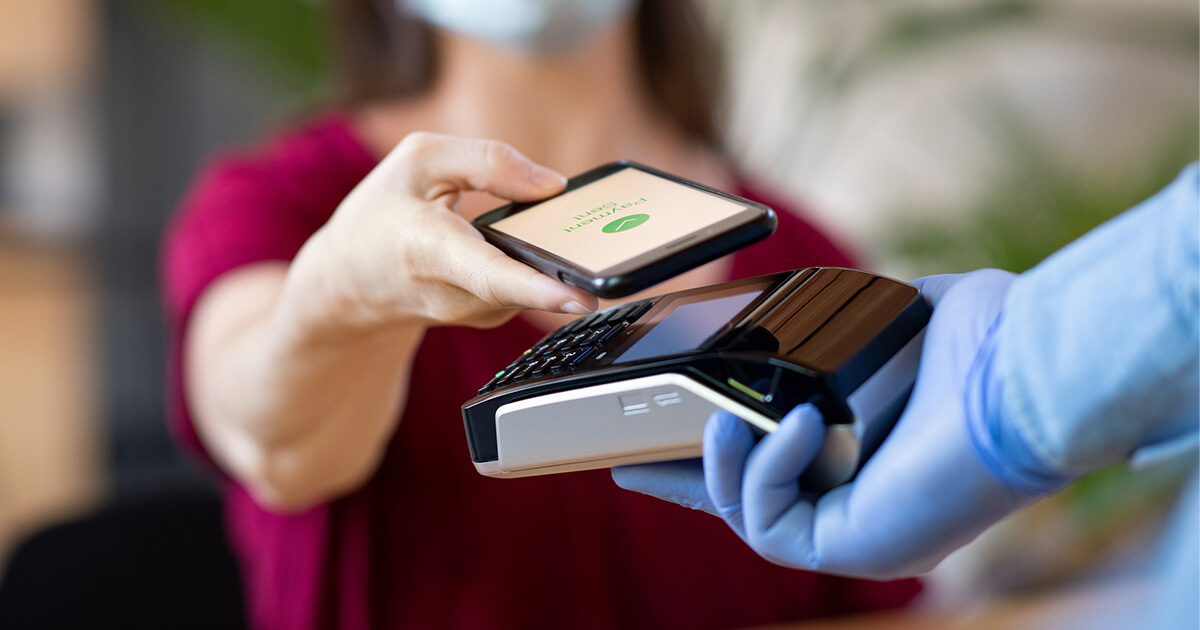
Reopening stores that have been shuttered for weeks or months takes more than just cleaning and reconfiguring. With technology more prominent in stores than ever before, it plays an essential role in creating a safe and frictionless experience as stores reopen. Store equipment may have developed issues while sitting idle, and those pulled from the spare pool may not have had updates or repairs completed. Further, some cleaning solutions used to sanitize stores may damage sensitive devices.
Technology care is an essential part of any reopening plan. Here’s a checklist for how to prepare your store tech for reopening.
1. Procure Cleaning and Safety Supplies
There’s lots of advice out there on how to clean—and to ensure customers see you doing it. Make sure you have a reliable supply of cleaning solutions. Health department compliance supplies are additional must-haves; Level 10 has added thermal screening tools, social distancing signage and plexiglass screens to its line card to help retailers procure and distribute these essentials.
2. Send Store Managers in Early
It will take a week or two to establish everything that needs to happen, and then make it happen, before reopening. Make sure you give your store managers enough time to create a punch list and arrange for equipment and labor.
3. Invest in Technology to Enable New Services
New ways of operating require the right tech for the job. Mobile devices can be invaluable in enabling in-store fulfillment of buy online/pickup in store, curbside pickup, ship from store and store transfers. Associates can also use mobile devices to process transactions curbside, or in-aisle to enable faster customer turnover.
Occupancy management solutions enable retailers to manage store traffic to comply with regulations, using sensors to automatically monitor counts. Take this a step further by integrating occupancy management software with backend applications, enabling customers to check occupancy before they visit. You may also consider digital signage to automatically cue customers when it is safe to enter and inform them about social distancing requirements, updated hours, cleaning measures and other valuable information.
For quick service, new, compact outdoor kiosk solutions are making it easy to rapidly add additional outside ordering to your location.
4. Make Sure All Your Gear Works, Including Spares
Equipment that’s gone unused for a while has a higher rate of failure. Allow time to test all devices, including those in the spare pool. For example, when one retailer needed to catch up on a lot of markdowns before reopening and was suddenly using all their scan guns rather than the usual two to three per shift, they found that not all of them were in great shape. Make sure devices are not only operational, but up to date with the latest versions of software and security protections.
5. Check Equipment Cleaning Guidelines
Avoid substances that will damage equipment. Cleaning solutions with at least 65% alcohol are effective against COVID-19, but if they seep into electronic equipment they will damage those devices. Check with equipment manufacturers on approved cleaning protocols, such as these from Elo Touch and Verifone.
6. Purchase Protective Coverings
In the early days of the pandemic, stores covered screens and other high-touch surfaces with plastic wrap. But this material is vulnerable to breakage and leaks. Retailers should instead purchase keyboard and payment terminal keypad covers and protective film for touchscreens. Be sure these products are designed to stand up to frequent cleaning with solutions containing at least 65% alcohol; rubber keyboard covers tend to be better than plastic because the adhesive on the plastic covers is not compatible with many cleaners. In addition, make sure protective covers are ADA compliant, such as having raised bumps on keys for the visually impaired. Level 10 has a large selection of these products and can also customize them to meet your needs.
7. Make Checkout Contactless
Strive to make your checkout safe and contactless. Use plexiglass screens, and if possible, enable contactless payment on payment terminals. If that’s not possible, consider providing low-cost gloves, disposable styluses, or a steady supply of hand sanitizer so customers can minimize contact with payment devices.
8. Communicate with Vendors
Your vendors are impacted by the pandemic, too. Are they sufficiently staffed to handle your service level agreements? Can they support your new equipment and modified needs? Is their repair depot prepared for a rush of new work orders?
9. Test Your Network
Networks will suddenly be in demand by more mobile devices or be required outside the store for curbside pickup and digital signage. Make sure your bandwidth and traffic prioritization controls are tuned for the new traffic patterns. Many retailers have moved mobile projects to the top of the priority list in the wake of the pandemic, and network optimization is a critical aspect of these projects.
Preparing and reopening stores is a top priority for both retailers and consumers, and these steps will help you leverage your technology to create a safe and seamless experience. Looking ahead, make sure your technology roadmap considers all the new ways of shopping to make customers comfortable and safe, and is also flexible so it can be adapted as needs continue to evolve.
To learn more about how Level 10 can help you keep your customers and employees safe as you reopen, contact us today.